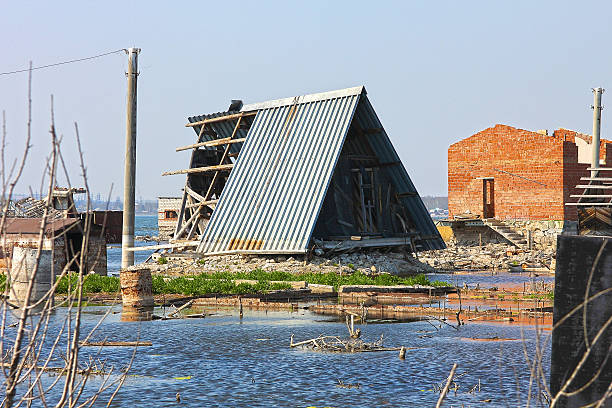The hurricane caused widespread destruction, including power outages, structural damage, and significant flooding. People are still recovering from the aftermath, and understanding Hurricane Helene damage claims in Florida during this time can help.
Extreme weather events are becoming more frequent these days. Hurricanes leave a devastating impact in their wake. Take Hurricane Helene, for example. In the aftermath, numerous organizations, such as the American Red Cross and the Salvation Army, have been providing aid to affected communities. It caused a lot of property damage that many people are still trying to recover from today. It’s so important for those affected to know how to navigate the insurance claim process. This guide aims to help break down the steps involved in filing claims.
Understanding Coverage
Prior to filing a claim with your insurance company, it is crucial to have a grasp of what’s covered under your policy. Policies can differ in coverage for types of damage like wind or flood damage. Checking the specifics of your policy will inform you about whether damages caused by Hurricane Helene are included in your coverage. Typically, homeowner policies cover wind damage, but flood damage often requires a separate insurance policy. Being aware of what is covered helps you navigate through the claims process more effectively.
Informing the Insurance Provider
Maintaining open communication with your insurance company is key to a hassle-free claims process. It’s important to get in touch with them to kickstart the process smoothly and avoid any hold-ups. Make sure to have your policy information when you reach out. This will help make the conversation more productive and streamlined. By giving them all the required details, you help the insurance provider start evaluating the situation promptly.
Filing the Claim
After evaluating the extent of the harm and collecting all the needed paperwork comes the task of submitting the claim in line for action. Numerous insurance companies provide platforms that simplify the process of submission significantly. Utilizing these platforms speeds up the process. Enables faster handling times. When submitting a claim, it’s essential to ensure that all necessary forms and documents are filled out completely. This crucial step helps reduce the likelihood of any delays or denials occurring.
Dealing with the Adjuster
After submitting a claim to your insurance company, an insurance adjuster visits your property to inspect the damage in person. It is important to work with the adjuster during their visit to ensure a fair evaluation. To help them assess the extent of the damage accurately, make sure to grant them access to all affected areas and share any evidence you have documented. Maintaining open and clear communication with the adjuster throughout this process is key. It plays a role in ensuring a comprehensive assessment that can impact the final outcome of your claim.
Keeping Records
It is advantageous to keep your records in order during the claims process. It helps to have copies of all communications with insurance companies, such as emails and letters, to create a trail of documentation that can be referenced if any disagreements come up. Furthermore, keeping track of dates, such as when claims were submitted, and adjuster visits took place, proves useful for monitoring case progress.
Handling Disputes
Disagreements can sometimes happen, even with preparation. If there are conflicts about claim amounts or coverage terms, it’s important to know how the dispute resolution process works. Insurance companies usually have their own ways of dealing with disputes that should be looked into initially. If needed, reaching out for mediation or legal guidance offers options for resolving disagreements. Determining when to handle disputes improves the chances of resolving them.
Exploring Additional Assistance
During times of large-scale calamities or crises, like Hurricane Helene, government aid initiatives may step in to provide assistance to the affected individuals or communities in need. This additional support typically involves offering assistance beyond what insurance policies would cover to alleviate some of the burden. Exploiting these resources can complement any existing insurance claims.
Rebuilding and Recovery
After resolving claims, the next step shifts to rebuilding efforts, focusing on using financial resources wisely for a successful recovery. Securing reliable contractors for restoration work helps avoid potential future issues. Additionally, fortifying structures against future hurricanes is essential to promote long-term strength and resilience, ensuring a stable and secure future.
In Summary
Dealing with insurance claims after Hurricane Helene can feel overwhelming at first, but a methodical approach can make the process more manageable. Start by thoroughly understanding your insurance coverage and what is included. Document all damages, take clear photos and notes, and maintain open communication with your insurance company. These steps are essential for a successful claim. Staying organized and informed will help ensure you don’t miss crucial details, improving your chances of receiving the assistance needed for a full recovery after the disaster. A proactive approach is key to navigating this challenging process.
Copyright © 2025 California Business Journal. All Rights Reserved.
For California Business Journal Disclaimers, go to https://calbizjournal.com/terms-conditions/.




